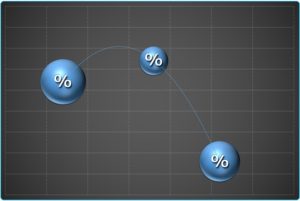 Basis points is also termed as bps or bips, 1 bps is equal to 0.01% that is 1/100th of a per cent. The term bps is often used in finance. Market participants often refer to interest rates in terms of basis points. One basis point is 0.01 % p.a. Therefore 100 basis points is 1 % p.a. If a central bank increases or lowers interest rates by 20 basis points this represents a change of 0.20 % p.a. Basis points are often written as “bps” and pronounced “beeps” or simply “points.”
Basis points is also termed as bps or bips, 1 bps is equal to 0.01% that is 1/100th of a per cent. The term bps is often used in finance. Market participants often refer to interest rates in terms of basis points. One basis point is 0.01 % p.a. Therefore 100 basis points is 1 % p.a. If a central bank increases or lowers interest rates by 20 basis points this represents a change of 0.20 % p.a. Basis points are often written as “bps” and pronounced “beeps” or simply “points.”
100 points is equal to 1%
For example
When you read in news such as, “RBI repo rate hike: Here’s what experts say about the 25 bps increase”
This means the Reserve Bank of India has increased the repo rate by 0.25%.
Advantage of using Basis points
The term basis points avoid the ambiguity in discussions about change in rates. Confusion could arise in a statement such as, “a 2% increase from an 8% interest rate.” The 2% increase could be interpreted as either an increase from 8% to 8.2% (relative) or 8% to 10% (absolute).
Using basis points clarifies the amount in question. The statement, “a 200 basis point increase” would signal that the rate has increased from 8% to 10%.
Leave your queries in the comment section below and subscribe to SAR publisher with the subscription box below.



